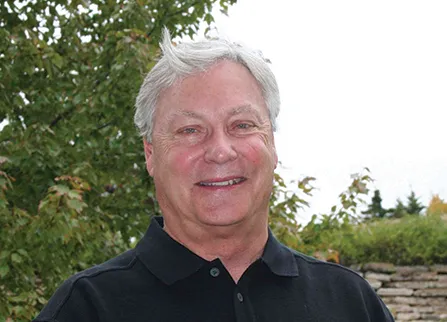Sometimes we get requests. Recently a couple close friends and I were discussing taking care of livestock during winter when this task can be a down-right chore. Well once you lay out all the cons, the conversation generally takes a 180 degree turn and you wind up talking about the humorous or lighter moments as well. In doing so, we stumbled onto the subject of how some of the folks around Hays speak. Here’s a column I wrote just for fun back in December of 2004. Enjoy.
By John Schlageck, Kansas Farm Bureau
While most people in our state speak the same language, there’s still a couple of counties in north-central Kansas where the King’s English is spoken in a unique manner – heck let’s call a spade a spade. It’s a totally different language.
After spending four years at Fort Hays State University, listening to my Uncle Alex, who grew up on a farm northeast of Hays and visiting with farmers and ranchers who continue to live in and call this part of our state home, I’ve decided to write about their language – so rich and unique to Kansas.
And please don’t think I’m making fun of these people who share this strong Volga German heritage. Just look at my last name. I’m one of them.
Sit back and read ‘cause here’s how the story gosse (goes). Whoa boyce (the fellas), I’m getting ahead of myself.
In case you haven’t visited, Hace is a small city in the north-central region of Kansas. A Cow’ndy is a small district within a state and Hace is located in Ellis Cow’ndy. And Wine is a major street in Hace.
Tounce are even smaller cities and there are several tounce in Ellis Cow’ndy. Muncher, Chinchin and Cat’rin are some of these small towns.
Chirman has long been the unofficial language spoken in Hace. Grimpa (your father’s father) talks Chirman to the boyce.
My Uncle Alex was forever axding (inquiring) me, “How much money do you make?” He also axed me dis and dat (this and that) and do you have one of deese, two of dose and three of dem (these, those and them)?
Farmers around Hace generally kept cattle in red barns built with borts. Borts are pieces of lumber like dem 2 X 4 borts. The livestock in the barns were usually couse (cows). You might even find a cult inside the barn. A cult is a young horse. These farmers sometimes feed their cult by trowing (to toss) them a bale of hay.
Hace farmers haul their livestock to market in a pigup (small truck). And they put the livestock in the back-a-duh (back of the) truck. When these folks go to town for church on Sunday they drife (drive) their carse. These automobiles include the following types: Fort, Pony’ac and Olce. Until a few years ago no one would be seen dead driving a leedle (little) forn (foreign) car made in Japan.
Every few years these farmers are blessed with rain and the roads become wet and slippery. That’s when they opt to drife their Cheap. A Cheap is a 4-wheel drife vehicle. Drife dat Cheap down dat @#$&**# wet wrote (road) right now and don’t get him stuck. Nearly all inanimate objects are referred to in the male pronoun.
When they finish Sunday worship services, and with color in their language like that, they certainly need religion – just kidding – some of the folks of Hace like to eat at one particular chigan (domestic fowl) house. There they have frite (cooked in grease) chigan ant frice (and French-fried potatoes). They also like to eat bret (bread) ant chelly (fruit preserves). I can still remember my Uncle Alex telling me at the dinner table when I was a boy of five, “Eat dis bret ant chelly sandwich what I figs’d (fixed) for you.”
Sometimes after eating too much Sunday dinner, Hace residents had to take pilts (medication) – especially after too much beer. That’s when they might have a het (part of the body above the neck) ache. Take dese pilts for dat het ache.
Sonofapitch’ was an often-spoken exclamation that tumbled liberally out of the mouths of members of the male sex in Hace. “Sonofapitch’ its hot out here boyce (boys, men).”
Chunk (junk) is something almost everyone in Hace has at one time or another and it is better than trash. Haul dat chunk over by (to) da dump.
&*#%dam’mitahell (another exclamation). Wint (moving air currents) blowing heart (strong, powerful) can often be found in Hace. Most residents keep their carse in a garot’ch (building).
The word toged’her actually means just the opposite – apart. &*#%dam’mitahell dat wint blew so heart last night, my garot’ch all fell toged’her.
Now my all-time favorite story is about this long-time Hace stockman who tells about driving out to his pasture one morning to look at his couse. Here’s how he told his tale:
“I drove my pigup out in the grass. I drove down the hill by my windmill up the hill and over by da fence line, back down another hill, through the creek and back up again. When I reached the top of the hill, dere de vere (momma cows) – GONE!
I’m out of here too. Tanks for reading and hope you enjoy Valentine’s Day and all the upcoming Holidace.



